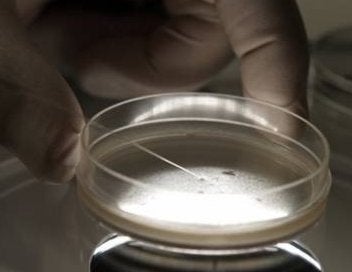
We've heard input from all ends of the political, religious, ethical and medical spectrums on last week's announcement that President Obama is lifting restrictions on federal funding for embryonic stem cell research. It's not surprising that each group's agenda drives the discussion deep into an area that benefits its individual perspective and message. And given the incredible complexities surrounding the topic, there are plenty of directions to take this discussion now and into the future.
I'd never understate these complexities or the strength of the beliefs that guide this discussion, but I have to admit I'm frustrated that certain facts seem to have been completely overlooked to sell these agendas. There are many examples of this, but to me, two of the most straightforward haven't seen much ink.
First, there has been a lot of coverage around the needless creation and destruction of embryos strictly for this research. Clearly, this isn't the only, or even first, option available. By some accounts, there are currently more than 600,000 frozen fertilized eggs sitting in fertility clinics across this country. Many of these have been there for years, abandoned by couples who no longer need them but are unable to make the decision to discard them. So, they simply stop paying for storage, leaving the decision to the clinics and doctors who will likely have to discard them at some point because of the hefty costs associated with maintaining them -- including the cost of facility rental, liquid nitrogen, storage containers, nitrogen delivery and clinicians to tend to the storage process. For the clinics and doctors, the decision then comes down to discarding these leftover embryos or donating them for medical research.
Perhaps even more frustrating for me in reading recent coverage is the overlooked fact that the majority of these leftover fertilized eggs are not suitable for donation to other couples. Many concerns have been voiced that lifting restrictions may encourage the destruction of fertilized eggs that could be donated to other infertile couples. What many people don't understand is that most of these excess fertilized eggs are of questionable viability almost by definition. They are created by couples who are already reproductively challenged, many of whom have poor quality sperm and eggs. Once the highest quality and most viable fertilized eggs from the harvest are used by the intended parents, the fertility clinic is generally left with those of inferior quality. In most cases, there is a very low likelihood of these fertilized eggs surviving the thawing and implantation processes to result in a pregnancy. It seems to me that the true argument is completely misplaced. Very few are arguing that there should be restrictions on the number of embryos created per patient in the first place to ensure that fewer are left to this nebulous end.
Getting back to the realities of donating leftover fertilized eggs, for arguments sake, let's assume that these parents are completely comfortable with the idea that there could be several children in the world with a genetic connection to them and the children they're raising. Even if these couples were comfortable donating their embryos to strangers, these excess fertilized eggs likely cannot be used based on quality. Meaning, the majority of the more than half million frozen, fertilized eggs currently housed in fertility clinic freezers are simply of no use to other couples faced with infertility. However, it's important to note that this wouldn't necessarily impact their viability for stem cell research, which is yet another of the technical nuances of this process that participants engaged in the ethical debate may not recognize. Again, the options available become discarding the embryos or employing for research.
Without restrictions on the number of embryos that can be created per couple, the current reality is that there are hundreds of thousands of embryos sitting frozen in clinics across the country. In most cases the end result is destruction of these fertilized eggs, regardless of the path. So, my question becomes why is leaving a human embryo languishing in liquid nitrogen considered preserving the sanctity of human life? And, in contrast, why is using fertilized eggs inevitably destined for destruction to help potentially find a life-saving cure not?
About Nazca Fontes, founder and president
In 1992, armed with a biology degree, Nazca entered the laboratory world of infertility. Daily experience with egg donors provided her with valuable insights into the critical need for a higher standard of egg donor recruitment. Her multi-faceted expertise, combined with her own less-than-ideal firsthand experience as an egg donor, became the unique platform upon which Nazca developed and nurtured ConceiveAbilities. Having earned a national reputation over the past decade as a leader in egg donation, one of Nazca's most passionate goals has been to use her own experience as an example to other young professional women that egg donation is a worthwhile endeavor that can be rewarding for both donor and intended parent. The resulting influx of such women has made ConceiveAbilities' donor pool unrivaled.